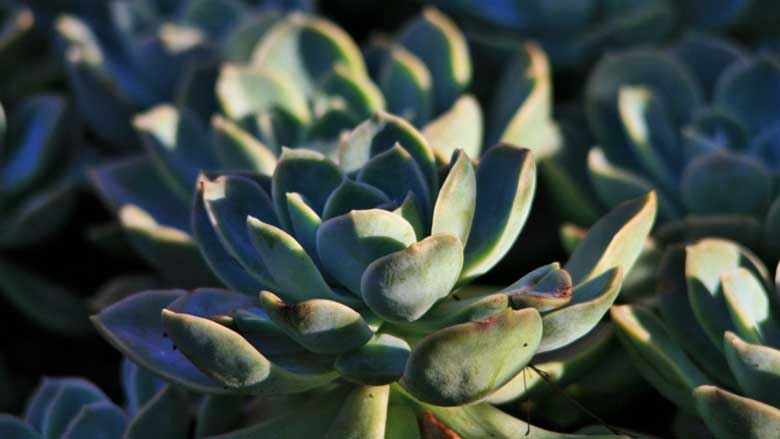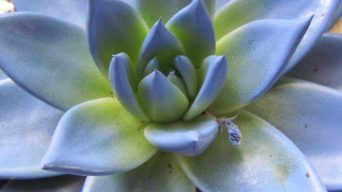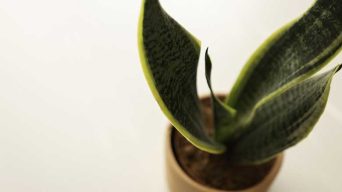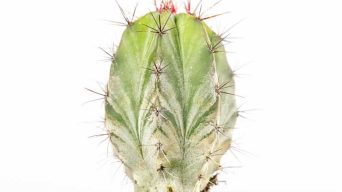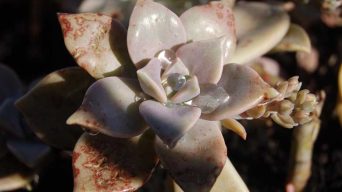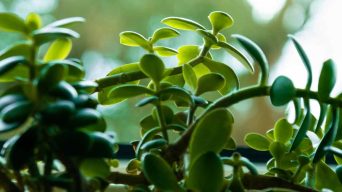Succulents are a popular choice for people who want to add some life and color to their homes. Succulents come in all shapes, sizes, and colors!
They are great plants for those that don’t have green thumbs because they require little care.
However, If black spots appear on your succulents, you need to know what they are and how to get rid of them.
These black spots could be a pest attacking your plants or something as simple as too much sunlight.
This post will give you all the information you need about black spots on succulents, including causes, treatments, and prevention so that yours can thrive!
What Causes Black Spots on Succulents?
Any number of things can cause black spots on succulents. A black spot is a symptom and not the actual problem.
By knowing what causes black spots, you will learn how to treat black spots and prevent them from happening in the future.
The most common causes for black spots are:
Overwatering
Succulents do not like to stay wet for long periods. If you overwater your succulents, they will begin to rot.
Rot can cause black spots on a succulent, which is why it’s important only to water them when the soil feels dry and let them get some sun.
Sunburn
If black spots are present on the top of your succulent, chances are it has sunburn.
If too much time is spent in direct sunlight, these black spots will begin to appear–thus resulting in a melted plant.
Ensure you keep succulents out of direct sunlight during the hottest part of the day or give them enough shade during the summer months.
Extreme Temperatures
If your succulent is exposed to too cold of temperatures, black spots can appear on its leaves due to what’s known as “frost damage”.
On the flip side, if the plant is left out in the blazing sun, black spots can form on the plant due to “sunburn”.
Chemical Burn
If black spots are present on your succulent, it could be a sign of chemical burn.
If you make a mistake with fertilizing or over-fertilizing your plant, black spots will begin to appear due to the chemicals burning the leaves and stems.
Ensure all of the proper procedures for applying fertilizer are followed and be careful when using chemicals around your succulents.
Insects and Pests
If black spots appear on your succulents, it could be due to insects or pests.
If you notice holes in your plant’s leaves or see bugs crawling around, chances are something is infesting its stem.
Look for snails and slugs if black spots begin forming, along with other worms and insects.
Common insects that infest succulents include snails and slugs, mealybugs, spider mites, and aphids.
Root Rot
If black dots begin appearing near the bottom of your succulent stem or leaves, root rot may be the culprit.
If black spots begin to form at the base of your succulent, it’s a sign that root rot has already started infecting its roots and stem–which will eventually spread throughout the entire plant if not treated in time.
Make sure you’re using well-draining soil when planting your succulents, as this can help prevent root rot from occurring.
Fungal Infections
If black spots begin to appear on your succulent, it could be a sign of fungal infections.
If you notice black dots along the stem or leaves, then chances are there is some infection that’s causing rot in your plant.
Some common types of fungi that can infect plants include black spot fungus and edema.
Water Warts
Water warts are black bumps that sometimes appear on the leaves of succulents.
These black spots could be a sign of water wart infestation caused by pythium fungus–a type of plant-destroying mold that will cause black dots to form all over your succulent if left untreated.
Viral Infections
If black spots begin to appear on your succulents, it could be a sign of viral infections.
If you notice black dots along the stem or leaves, and they seem to form in circular patches, chances are there is some sort of virus that’s infecting its roots and stems–which will eventually spread throughout the entire plant if not treated in time.
Trauma
If black spots appear on your succulent after it falls or gets knocked over, trauma may be the culprit.
If you notice black dots along the stem of leaves formed in circular patches, there is a good chance that this type of damage was caused by some sort of impact to its roots and stems.
Mineral Deficiencies
If black spots begin to appear on your succulent after you notice that its leaves are losing color or dying, mineral deficiencies may be the problem.
If black dots start to form at the base of your plant, it’s a sign that there is some sort of deficiency that prevents nutrients from being absorbed through its roots and stems.
How To Get Rid of Black Spots on Succulents
Treating black spots on a succulent can depend on what caused black spots in the first place.
For example, black spots on succulents can be caused by too much sun exposure or overwatering, so the treatment will need to focus on your particular cause.
Overwatering Treatment
If black dots are present due to overwatering, make sure you let your plant dry out before watering it again and repotting if necessary.
Over time, these black spots will start to turn into black mold. If it is a case of overwatering, then once you’ve corrected your care routine and the black dots have disappeared or are diminishing, don’t let it happen again!
Sunburn Treatment
If black dots are present due to sunburn, make sure you move the plant away from direct sunlight and provide it with enough water until black spots start to disappear.
If black dots begin to form on your succulent after its leaves have been exposed to too much sun, then repotting in a bigger container that provides more shade may help alleviate these symptoms.
However, this will not be an instant fix for the problem.
Frost Damage Treatment
If black dots are present due to frost damage, make sure you move your plant to a warmer area and provide it with more water until black spots start to disappear.
You need to be extra careful when moving your succulents indoors, as black dots can quickly spread throughout the entire plant if you aren’t taking proper preventative measures.
Chemical Burn Treatment
If black dots are present due to chemical burn, make sure you move your plant away from the source of the chemical and provide it with water until black spots start to disappear.
If black dots appear on your succulent after its leaves have been exposed to a chemical, make sure you don’t use that chemical again and repot in new soil as soon as possible.
Insects and Pests Treatment
If black dots are present due to succulent pests, make sure you treat your plant with an organic pesticide.
The black spots will disappear once the infestation has been treated.
However, black dots can reappear if new invaders show up, so continue treatment until all signs of black spots have disappeared.
Root Rot and Mildew Treatment
If black dots are present due to root rot or mildew, make sure you treat your plant with a fungicide.
If black spots start to form at the base of your succulent after it’s been exposed to water or humidity for too long, then its roots may be rotting.
In this case, repotting in new soil may help alleviate the problem, and black dots will disappear once the plant has been treated successfully.
Fungal Infections Treatment
If black spots are present due to a fungal infection, there are several different types of treatment you can try depending on the type of fungus that has infected your succulent’s soil or leaves.
You can use neem oil, which protects against black spots, powdery mildew, and other fungal diseases.
Water Warts Treatment
If black dots are present due to water warts, treat them by applying black tea to the affected area.
This will allow you to get rid of the black dots on succulents without damaging them.
You can also apply black tea to help prevent black dots on succulents in the future.
Edema Treatment
If black spots are present due to edema, treat them by removing cactus soil from around the plant and replace with fresh potting mix.
Don’t water for several days, and then water thoroughly.
Viral Infections Treatment
If black dots are present due to a viral infection, the black dots will remain even if the plant is treated.
The virus needs to be identified and treated with specific remedies to treat black dots due to a viral infection.
Trauma Damage Treatment
If black dots are present due to a trauma or black spots are found on the leaves of your succulents, then you want to remove any dead tissue immediately.
You will need to disinfect your cutting tool or knife to prevent the black dots from infecting other healthy leaves.
Once you have removed the black spots, apply a light layer of organic sulfur powder with an old paintbrush.
Mineral Deficiencies Treatment
If black spots are present due to mineral deficiencies, the black dots will remain even if you treat for mineral deficiencies.
To treat black spots due to mineral deficiencies, try fertilizing with a weak solution of seaweed extract once every two weeks during its growing season.
How To Prevent Black Spots on Succulents
Prevention is better than cure, but you should still take action if black spots on succulents have appeared.
The first step is to remove the succulent leaf or plant part that has been affected by black spots on succulents and make sure no other parts of the plant are contaminated.
To prevent the black spots from spreading any further, treat all your plants with a fungicide spray for outdoor plants, which will help protect them against black spot infection in the future.
In addition, there are other steps you can take as well:
Make Sure Succulents Receive Enough Sunlight
Succulents need at least four hours of direct sun per day so make sure they receive plenty of sunlight.
Make the necessary adjustments to your plant’s location if black spots on succulents start appearing.
This will help prevent black spot infection in the future and other types of diseases as well.
Temperatures Should Be Between 60 And 70 Degrees Fahrenheit
Succulents don’t like cold weather, so make sure you keep them indoors during colder months and outdoors when it starts getting warmer again (from spring through autumn).
This is an excellent way to ensure that black spots on succulents won’t develop or spread.
Ensure There Is Proper Drainage In The Container Your Succulent Grows In
For black spots not to appear on succulents, there should be proper drainage in the growing container.
If black spots have already appeared on your succulents, make sure to take them out of their current pot or planter and replace them with a new one that provides better drainage.
Make Sure The Soil Your Succulents Grow In Is Well Draining And Doesn’t Remain Wet For Too Long
If black spots on succulents appear, it means that your soil doesn’t drain water properly, and the roots of your plants are constantly wet.
Make sure you replant them in a different pot or planter with proper drainage so that black spot infection won’t develop any further.
Keep Water Off Of Leaves To Prevent Black Spots From Developing
Since black spots on succulents start as tiny black dots, which gradually turn into larger black circular areas, try not to get leaves too wet when watering plants (especially if they already have black spots).
This will prevent further outbreaks of black spots on succulents.
Keep The Humidity Around Succulents Low
If black spots on succulents develop, make sure you keep the humidity around them low. Usually, black spot infection occurs when there is too much moisture in the air.
By keeping humidity levels under control and not watering your plants too frequently, black spots on succulents will be prevented from developing.
Don’t Overwater Your Succulents
Overwatered succulents is one of the main reasons black spots on succulents develop.
Make sure only to water them when their soil is completely dry and let it drain out any excess moisture before replanting into a new pot or planter with better drainage, then use your finger to check whether you need to water again in the future.
This will help prevent black spot infection from developing further.
Inspect Your Succulents Regularly For Signs of Pests and Disease
Since black spots on succulents start appearing after your plants have been infected with pests or disease, you should regularly inspect them for any signs of either.
Carefully check the undersides and leaves of each plant to make sure black dots haven’t developed, which can help prevent black spot infection from taking place in the future.
Clean Tools And Containers Before Using Them
Make sure to clean all your gardening tools and containers before using them.
Be careful not to spread black spot infection from one plant or leaf to another by disinfecting these items first.
This will prevent diseases from spreading any further than they already have, plus it is a good practice that can be applied in other situations as well.
Final Thoughts
Growing succulents is an excellent hobby that can bring you years of happiness, but black spots are a problem for many gardeners.
Black spots on succulents are something that you may come across when caring for these plants.
There are several causes for black spots on succulents, but regardless of the reason, you can always treat black spots with several different methods.
It is essential to diagnose the black spot to take action based upon your plant’s situation so it can grow healthy and strong once again!

